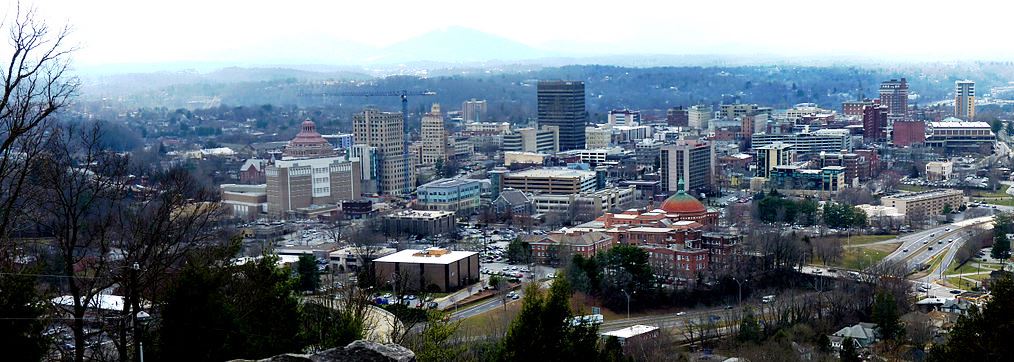Note: The following modified excerpts are from an article by Leslie Anderson that was originally published in the Mountain Xpress on September 17, 2014. Leslie Anderson served as Asheville’s downtown development director, and then city development director, from 1986-95. She is now president of Leslie Anderson Consulting, Inc.. The source article is much older than what we normally publish in REVITALIZATION. It’s included because it’s an intimate look at a community’s successful revitalization process, which is rare.
If you ever wonder whether miracles still happen, a drive through downtown Asheville, North Carolina in just about any season or time of day will provide plenty of affirmative evidence.
Many folks who know today’s downtown seem to imagine that in the 1990s, businesses simply moved into old buildings, set up shop and watched the customers flow in. Others mistakenly believe that a small number of affluent, committed white men made it happen. Often when our transformation story is told, the large and distinct role of our city and county governments is minimized or forgotten altogether. This revisionist history is inaccurate, diminishes the true story, and wipes away valuable lessons that we need to remember and others might find instructive.
This Mountain Xpress’ article focus on the ’90s plucks one decade out of a four-decade revitalization saga. I arrived in Asheville from Cullowhee in 1972. I observed the serious demise of our center city that started when the (sprawl-based) Asheville Mall opened in November 1973, and I experienced the “ghost town” of the next 15 years or so. I participated in the turnaround of the mid-1980s to ’90s, and I’ve been thrilled by the subsequent growth and vibrant activity. Even during the (Bush administration’s) Great Recession, downtown remained amazingly resilient.
In the 1970s and ’80s, the naysayers’ voices were loud and persistent. Due to previous conflicts and misstarts, few people believed that downtown could rebound. But we did it. Moving from a wasteland of vacant, dirty streets, partial demolitions, lifeless buildings, and adult bookstores and theaters to the “top 10” lists in just about every category is truly a miracle. Our transformation story is multifaceted, wide and deep, and it includes contributions from hundreds of citizens who cared. The following reflections merely scratch the surface.
The revitalized downtown Asheville we enjoy today actually had its roots in the 1980s, when numerous entities signed on to a comprehensive vision statement that boiled down to this: create an environment where both civic life and commerce flourish. We spent the late ’80s and all of the ’90s making that vision reality.
In retrospect, perhaps the most significant achievement of the 1990s was resilience: successfully sustaining many substantial initiatives, navigating the nasty conflicts, making downtown interesting again, creating enjoyable and useful volunteer opportunities, and continuing to plan, build and co-create the district piece by piece.
Downtowns are never “finished”: Although there were excellent outcomes in the ’90s, they only hinted at the future potential and joy of a unique, captivating, fun space that also succeeded in becoming Western North Carolina’s economic, social and governmental center. We knew then that an achievement of this magnitude, won over many years by thousands of players, would leverage other momentous civic and economic achievements in Buncombe County and beyond. The rest of this story proves that our bold, smart, hearts’ desires were right: Downtown is now a true miracle.
Photo of downtown Asheville by Abe Ezekowitz via Wikipedia.

